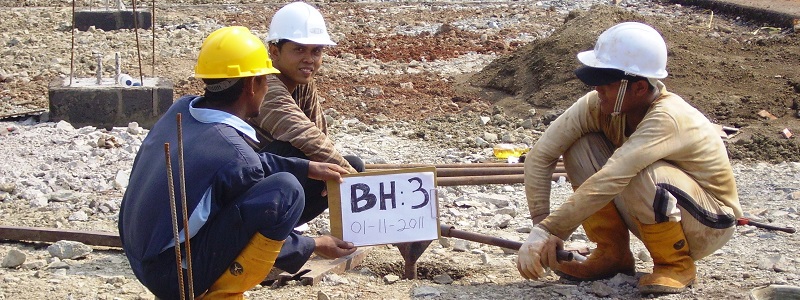Automotive Interiors Manufacturing Facility, Cikampek, Indonesia
SLP Environmental consultants were appointed to conduct and report a combined Phase 1 Environmental Site Assessment (Phase 1 ESA) and Phase 2 Geoenvironmental Site Investigation for a auto components manufacturer in Indonesia as part of their business transaction due diligence process. The client was considering acquiring the study site to construct a new manufacturing facility and required the environmental baseline conditions to be established and an assessment undertaken as to whether any potential environmental liabilities were associated with ownership of the study site. The assessment was undertaken and reported in accordance with guidance presented in ASTM E1527 – 05; Standard Practice for Environmental Site Assessments: Phase I Environmental Site Assessment Process.
The primary objective of the Phase 1 ESA was to assess whether recognized environmental conditions (REC) were present at the study site. The assessment comprised of a pre-audit questionnaire for completion by the property owner, a detailed inspection of the site and its environs, interviews with key staff and a review of site records and data. Desk study research was also undertaken with respect to the environmental sensitivity of the study site area and this included information on historic landuses, local geology and hydrogeology, hydrology and local ecology.
The Phase 2 ESA site investigation locations were targeted to focus on areas of potential environmental concern that were identified during the preceding Phase 1 ESA. The scope of works comprised the rotary boring of several probe holes to a depth of approximately 5m below ground level (bgl) and the recovery of soil samples for laboratory analysis at 1m intervals or wherever a change in strata or the presence of potential contamination was noted.
Groundwater monitoring wells were installed in several of the soil bores and these were developed and purged in accordance with industry best practice prior to the groundwater samples being recovered. Soil and groundwater samples were scheduled for environmental testing for a range of organic and inorganic chemical analyses at an ISO 17025 accredited environmental testing laboratory. A coordinates and elevation survey relative to mean sea level was undertaken at each probehole location to determine the hydraulic gradient and shallow groundwater flow direction.
The soil and groundwater test results were compared with Dutch Quality Standards (Tier 1 Screening) for an industrial site use to assess if historic activities on the site had resulted in contamination at levels that may represent a legal liability or have a detrimental impact on human health or environmental receptors.

